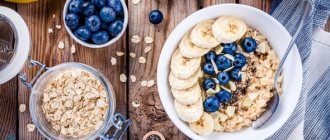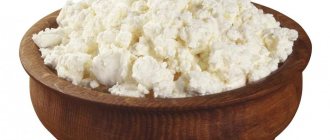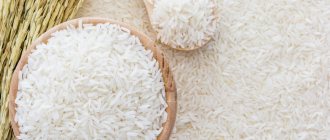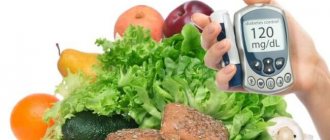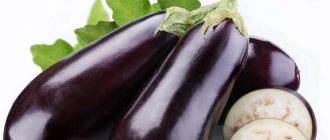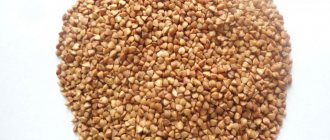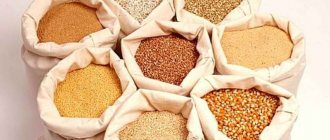The basis of diabetes treatment is proper nutrition. This is especially true for people with type 2 diabetes, in which following a low-carb diet is even more important than taking medications. In the early stages of the disease, it is possible to maintain a normal state without medications, only through nutrition.
When you have high blood sugar, it is very important to monitor what carbohydrates and in what quantities enter the body. Therefore, a natural question may arise about whether it is possible to eat bananas if you have diabetes.
Benefit
Bananas contain many beneficial elements. They are especially valued for their high content of vitamin B6, or pyridoxine, which helps cope with stress. They also contain a lot of ascorbic acid, a natural antioxidant.
In addition, the composition contains potassium and iron, which are responsible for normal blood pressure, which is very important for diabetes.
Thus, banana is a source of vitamins and microelements important for diabetics; it helps prevent diseases that usually develop against the background of diabetes:
- kidney diseases;
- cardiovascular pathologies;
- liver diseases;
- problems with biliary excretion.
For type 1 diabetes, a banana can help raise blood glucose levels in case of hypoglycemia after an insulin injection.
The benefits and harms of bananas for diabetics
Like any product, banana can have positive and negative effects when consumed. It is useful for a person with diabetes because:
- saturates the body with potassium, reducing the risk of developing diseases of the heart muscle and blood vessels;
- is a source of vitamins;
- stimulates the immune system and normalizes the functioning of the antioxidant system;
- eliminates constipation due to its soft consistency and significant amount of fiber in the composition.
Bananas promote the production of serotonin, improving a person’s mood.
But you shouldn’t get too carried away with this fruit, since it contains a large amount of carbohydrates despite its relatively low calorie content. In addition, banana is not the easiest food to digest, and given that in diabetes mellitus the metabolism is already impaired, it can cause a feeling of heaviness and bloating.
Can diabetics eat them?
Despite all the benefits of bananas, if you have high blood glucose levels, you should eat them with caution and in very moderate quantities. Being a source of fast carbohydrates, they rapidly increase sugar levels.
To avoid harm from the fruit, you need to follow simple tips:
- You should not eat overripe fruits due to their high sugar content.
- Green bananas, which contain a large amount of starch, which is difficult to remove from the body, are also contraindicated for diabetics.
- It is recommended to eat fruits of medium ripeness only.
- It is advisable to puree them.
- The best option for all diabetics is stewed or baked fruits.
- Bananas should not be washed down with water, nor should they be drunk immediately before eating; they should be eaten half an hour after drinking.
- It is not recommended to eat them on an empty stomach.
- You can’t eat a whole banana at once; it needs to be divided into several parts and spread out throughout the day.
- According to some nutritionists, it is not advisable for diabetics to consume more than two pieces per week.
- It is forbidden to eat bananas along with other starchy and high-calorie foods that are difficult to digest.
They are best combined with sour fruits: oranges, kiwi, apples
IS IT POSSIBLE TO EAT BANANAS WITH DIABETES?
When you have diabetes, it is important to keep your blood sugar levels as stable as possible. Proper control of your blood sugar can help prevent or slow the progression of some of the major complications of diabetes. For this reason, it is important to eliminate or minimize your intake of foods that cause spikes in blood sugar levels. Even though bananas are a healthy fruit, they are quite high in carbohydrates and sugar, which are the main nutrients that raise blood sugar levels.
Bananas contain blood sugar-raising carbohydrates
If you have diabetes, the amount and type of carbohydrates present in your diet is important to know. This is because carbohydrates raise blood sugar levels more than other nutrients, which means they can have a big impact on your blood sugar levels. When blood sugar levels rise in people without diabetes, the body produces insulin. It helps move sugar from the blood into cells where it is used or stored. However, this process does not work properly in people with diabetes. Their bodies do not produce enough insulin, or their cells become resistant to the insulin they produce. If not managed properly, high carbohydrate foods can cause spikes in blood sugar levels or persistently high blood sugar levels, which is unhealthy.
How much sugar is in a banana?
One medium banana (about 126 grams) contains 29 grams of carbohydrates and 112 calories. Carbohydrates come in the form of sugar, starch and fiber. One medium-sized banana contains about 15 grams of sugar.
Conclusion:
Bananas do contain simple carbohydrates, which can raise your blood sugar levels more than other nutrients.
Bananas contain fiber, which can lower blood sugar levels
In addition to starch and sugar, a medium-sized banana contains 3 grams of fiber, or dietary fiber. Everyone, including people with diabetes, should eat enough dietary fiber due to its potential health benefits.
However, fiber is especially important for people with diabetes because it can help slow the digestion and absorption of carbohydrates.
It can reduce spikes in blood sugar levels and improve overall blood sugar regulation.
One way to determine how a carbohydrate-containing food affects your blood sugar is to look at its glycemic index (GI).
The glycemic index ranks foods based on how much and how quickly they raise your blood sugar.
Scores range from 0 to 100 with the following classifications:
Low GI: 55 or less.
Average GI: 56 to 69
High GI: from 70 to 100
Diets based on low GI foods are thought to be particularly good for people with type 2 diabetes
This is because low GI foods are digested more slowly and cause a more gradual rise in blood sugar.
In general, bananas score low to medium on the GI scale (42 to 62, depending on ripeness) ().
Conclusion:
In addition to sugar and starch, bananas contain fiber. This means the sugar in bananas is digested and absorbed more slowly, which can prevent spikes in blood sugar levels.
Green (unripe) bananas contain resistant starch
The type of carbohydrates in a banana depends on its ripeness.
Green or unripe bananas contain less sugar and more resistant starch. Resistant starch is long chains of glucose (starch) that are “resistant” to digestion in the upper part of the digestive system. This means they act similarly to fiber and do not cause an increase in blood sugar. They can also help feed friendly bacteria in the gut, which has been linked to improved metabolism and improved blood sugar control. In fact, a 2015 study on blood sugar regulation in women with type 2 diabetes found some interesting results. Those who took resistant starch supplements over an 8-week period had better blood sugar control than those who did not. Other studies have shown that resistant starch may have beneficial effects on people with type 2 diabetes. Benefits include increased insulin sensitivity and decreased inflammation. The role of resistant starch in type 1 diabetes is less clear.
The effect of a banana on blood sugar levels depends on its ripeness
Yellow or ripe bananas contain less resistant starch than green bananas and also contain more sugar, which is absorbed more quickly than starch. This means that fully ripe bananas have a higher GI and cause your blood sugar to rise faster than green or unripe bananas.
Conclusion:
Green (unripe) bananas contain resistant starch, which does not raise blood sugar and may improve long-term blood sugar regulation. Yellow ripe bananas contain more sugar than green ones, so they may cause a greater rise in blood sugar.
Portion size is important
When it comes to the amount of sugar in a banana, ripeness is not the only factor; size also matters. The larger the banana, the more carbohydrates you will get. This means that a larger banana will have a greater impact on your blood sugar. This portion size effect is called glycemic load. Glycemic load is calculated by multiplying the glycemic index of a food by the number of carbohydrates in a serving and then dividing that number by 100.
A score of less than 10 is considered low, from 11 to 19 is considered average, and more than 20 is considered high. Bananas vary in size and contain between 18.5 and 35 grams of carbohydrates. If the banana were fully ripe (GI 62), its glycemic load would be between 11 for a very small banana and 22 for a very large banana. To avoid raising your blood sugar too much, it is important to know the size of banana you are eating.
Conclusion:
The size of the banana you eat determines its effect on your blood sugar levels. The larger the banana, the more carbohydrates you consume and the more your blood sugar levels rise.
Are bananas safe for people with diabetes?
Most general dietary guidelines for diabetes recommend eating a healthy, balanced diet that includes fruit. This is because eating fruits and vegetables is associated with improved health and a reduced risk of diseases such as heart disease and some types of cancer.
People living with diabetes are at an even greater risk of developing these diseases, so it is important to eat enough fruits and vegetables. Unlike refined sugar products like candy and cakes, the carbohydrates in fruits like bananas come along with fiber, antioxidants, vitamins and minerals.
Specifically, bananas contain fiber, potassium, vitamin B6 and vitamin C. They also contain some antioxidants and beneficial plant compounds. For most people with diabetes, fruit (including bananas) is a healthy choice. Although, if you're following a low-carb diet to manage your diabetes, even a small banana contains about 22 grams of carbohydrates, which may be too much for your diet. If your healthcare provider thinks you can eat bananas, it is important to be mindful of the ripeness and size of the banana to reduce its effect on your blood sugar.
Conclusion:
Fruits like bananas are healthy foods that contain fiber, vitamins and minerals. You can include bananas in your diet even if you have diabetes. Always check your nutrition plan with your healthcare provider first.
Let's sum it up
If you have diabetes, you can eat fruits such as bananas as part of a healthy diet. If you like bananas, the following tips can help minimize their impact on your blood sugar:
Watch your portion size. To reduce the amount of sugar you eat in one sitting, eat a smaller banana.
Give preference to firm, almost ripe bananas. Eat bananas that are not too ripe so they have a little less sugar. Spread your fruit intake throughout the day. Spread your fruit intake throughout the day to reduce your glycemic load and keep your blood sugar levels stable. Eat them with other foods. Enjoy bananas with other foods, such as nuts or full-fat yogurt, to slow down the digestion and absorption of sugar.
If you have diabetes, remember that carbohydrate-containing foods can affect your blood sugar differently. Therefore, you can monitor how eating bananas affects your blood sugar levels and adjust your eating habits accordingly.
Endocrinologist M.P. Beymanova
When not to
It is important to know that not all diabetics can eat bananas. They are contraindicated in severe forms of diabetes, when glucose levels are high and do not decrease. In this case, they can only worsen the person’s condition. In the stage of decompensation, any sweets are strictly contraindicated for diabetics.
It should be remembered that a banana is a fairly heavy fruit to digest, and diabetics do not need extra stress, since their metabolism is already impaired.
Overweight diabetics should not eat them. They are contraindicated if there are poorly healing trophic ulcers on the body.
It is not recommended to use them in case of vascular diseases, including atherosclerosis.
According to doctors, if you have diabetes of both the first and second types, and regardless of the stage and severity of the disease, you should not eat dried bananas, which have a high glycemic index - 74 (fresh 55) and are very high in calories - 340 kcal / 100 g.
Types of diabetes
SD has three main types:
- first;
- second;
- gestational.
- The first type is called insulin-dependent. This definition is due to the fact that the pancreas, under the influence of certain factors, loses the ability to secrete the required amount of the hormone insulin, which regulates the metabolism of carbohydrates in the body.
- The second type of disease develops when the gland produces insulin in sufficient quantities, but the patient’s tissues lose sensitivity to it, and as a result, elevated sugar levels are recorded in the blood.
- The gestational type can occur in women during pregnancy, although before pregnancy the glucose level did not go beyond normal limits.
Approximately 85% of patients are diagnosed with the second (insulin-resistant) type of the disease.
The disease develops for a number of reasons, including nutritional disorders, obesity and cardiovascular disease. All these factors are interconnected and mutually reinforce each other. Therefore, dietary issues are of particular importance for patients with this type of disease.
There are many foods that you can find conflicting advice on the Internet regarding the use of for diabetes. One such product is bananas.
Dessert bananas
In what form is it available?
Bananas for diabetes can be eaten in different forms: fresh, boiled, stewed, frozen. The best option is to heat treat them. They should not be combined with other foods except sour fruits.
You should not eat bananas that are part of desserts prepared with syrup or sugar.
Recipes for diabetics:
Baked
- Peel the fruit and cut into slices.
- Place on a baking sheet greased with butter.
- Place in the oven for 20 minutes.
Salad
Prepare a fruit salad from sliced bananas, citrus fruits, and pineapple. Take fruits in arbitrary proportions.
Fruit salad is an excellent and healthy treat
Fruit juice
Extract the juice from one banana and mix it with pomegranate juice. Strain before use.

